Green mushrooms are one of the most versatile fungi on the planet. They come from different mushroom families, ranging from the common green russula to more rare green coral.
These mushrooms occur in different places from lawns to forest floors, making them universally accessible to foragers.
Below we’ll look at different green fungi, how to identify them and more.
It is important to be cautious when identifying and consuming wild mushrooms, as some species can be poisonous. If you are unsure whether a mushroom is safe to eat, it is best to err on the side of caution and not consume it.
List of Green Mushrooms
1. Aniseed Toadstool
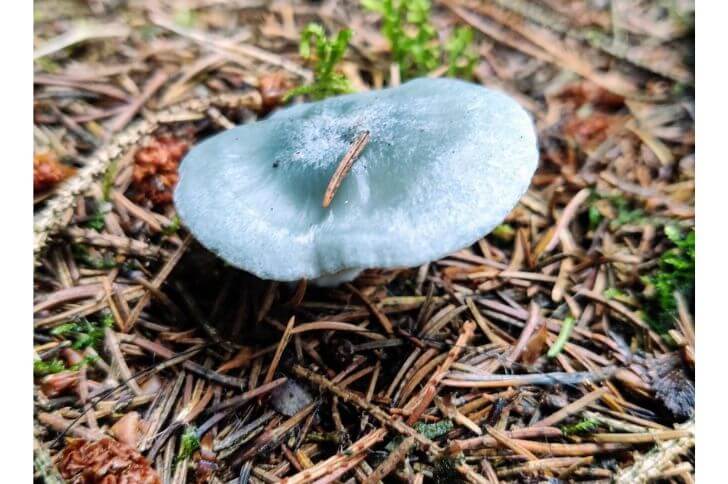
Aniseed toadstool mushrooms are a rare and unique species of mushroom found in forested areas, growing near oaks, fir, and conifers.
Identification:
They get their name from the anise-like smell they emit. When foraging, you are likely to smell this green mushroom before you see it.
When identifying aniseed toadstools it is important to note that they typically grow in clusters. They have an almost-flat cap which is 2-4 inches in diameter and is bluish-green.
Underneath, the pale gills are moderately spaced and are attached to the top of the stem. Note, stems do not have rings but the base is slightly swollen.
Aniseed toadstools have a long history, with references appearing in ancient mythologies from all over the world.
2. Green Brittlegill
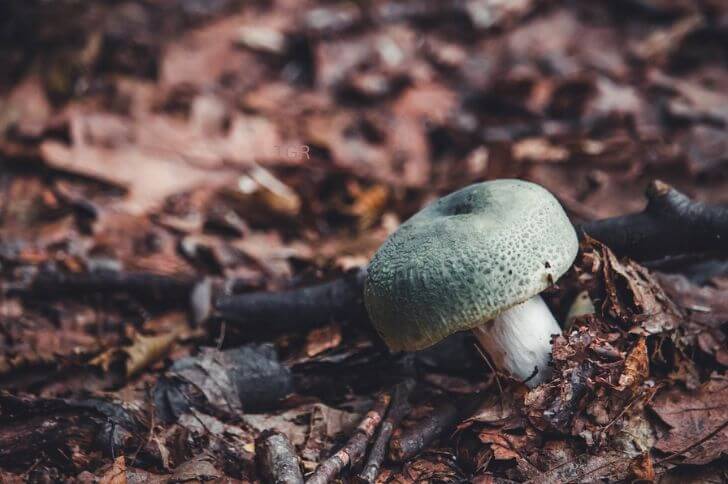
Russula aeruginea or green russula are a type of edible green mushroom. If you’re looking to identify this type of mushroom, there are several key characteristics to look out for.
Identification:
One, green russulas are almost always found under birches. Two, these green mushrooms have a bright green or blue-green cap that can grow up to 3.9 inches in diameter. The surface is slightly sticky and slightly sunken in the middle.
The gills underneath the cap are white turning yellow-brown on maturity. When cut open, it doesn’t have a distinctive smell. Like most russulas, the green russula is edible.
However, it’s a rare mushroom, meaning you’ll have a hard time gathering enough for a meal. I recommend that if you come across one, take a photo and move on to other species like oysters.
3. Green Elfcup Mushrooms
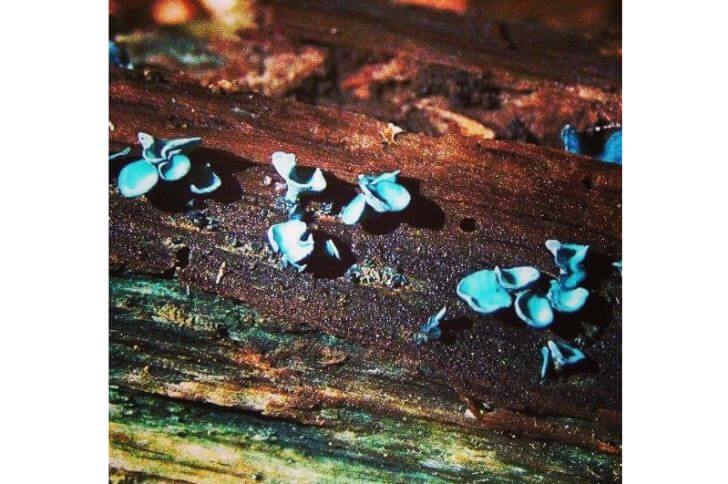
Green elfcup mushrooms (Chlorociboria aeruginascens) are a fascinating, yet often overlooked species of fungus due to their size.
Identification:
Found mostly in the temperate forests of North America and Europe, these tiny green mushrooms have an intriguing appearance.
The goblet-like caps measure up to 0.2 inches across with wavy edges. Surface is bright during the early stages of growth and darkens as this green fungus ages.
The undersurface is pale green. When young, they look similar to jellybeans on the forest floor!
4. Green-staining Coral Mushrooms
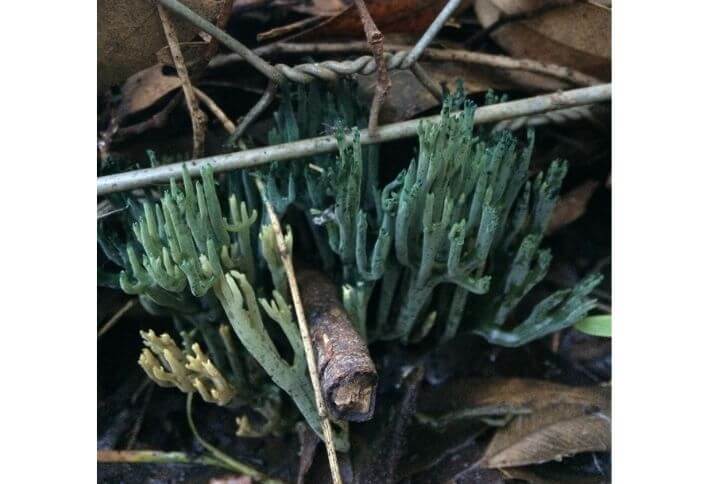
Most commonly found in the Pacific Northwest, green-staining coral mushrooms occur from June through September.
Identification:
These green mushrooms can be identified by their olive-colored branches with slightly forked tips. Each branch grows to about 2 inches tall.
The flesh is white and soft to the touch, but when it’s bruised or cut it turns a bright shade of green; because of that they are known as green-staining corals.
These mushrooms produce a spore print that is creamy yellow in color. They favor coniferous forests and typically grow on the ground.
Related Read: Check different types of purple mushrooms
6. Parrot Waxcap
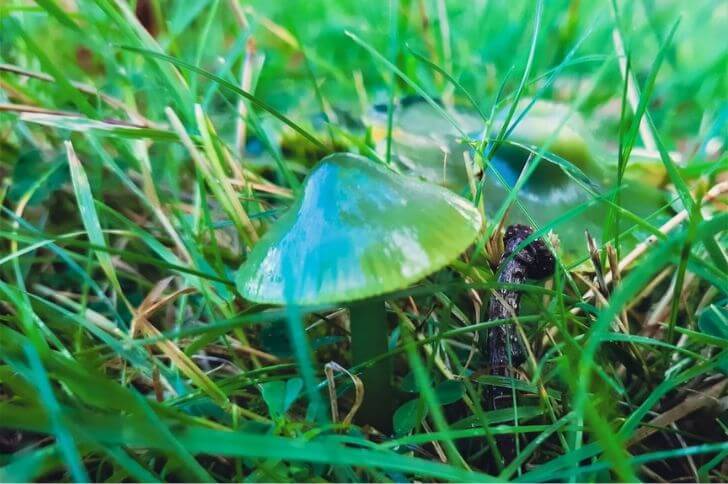
Colloquially known as the parrot toadstool,the parrot waxcap mushroom is a green fungus species found in both grasslands, woodlands and even graveyards.
Identification:
You can identify parrot waxcaps by their bright green bell-shaped caps. Younger species are green, turning yellowish with age. Gills are yellowish and widely spaced.
When can you find these green mushrooms? There are September to November mushrooms. Their vibrant colors means great photos. Can you eat them? They are edible but very slimy and small in size; Not worth the hassle.
7. Verdigris Agaric
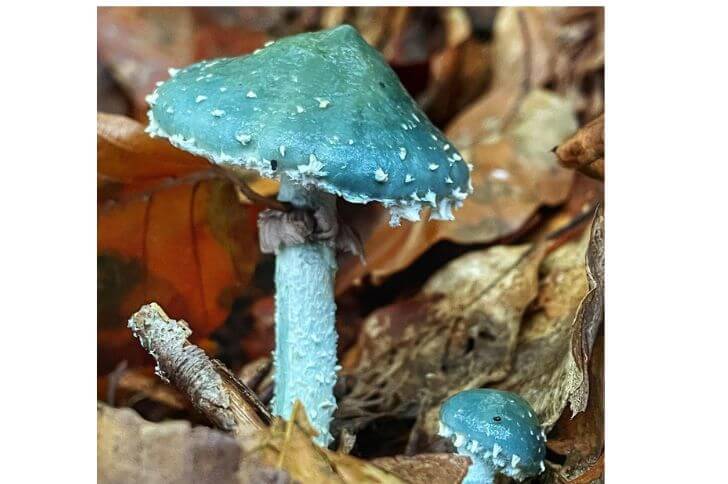
Another slimy green mushroom that grows in rotting wood is the verdigris agaric.
Identification:
Known for their vibrant blue-green coloring, these mushrooms are easily identifiable and make for a great addition to any outdoor enthusiast’s collection. And apart from color there are other characteristics you can look for in order to correctly identify Verdigris agaric mushrooms.
The caps of these green mushrooms tend to have smooth surfaces and wavy edges which can be quite pronounced when viewed up close. The stalks also have a characteristic white scales which helps set them apart from other similar looking species.
8. Green Stem Pinkgill
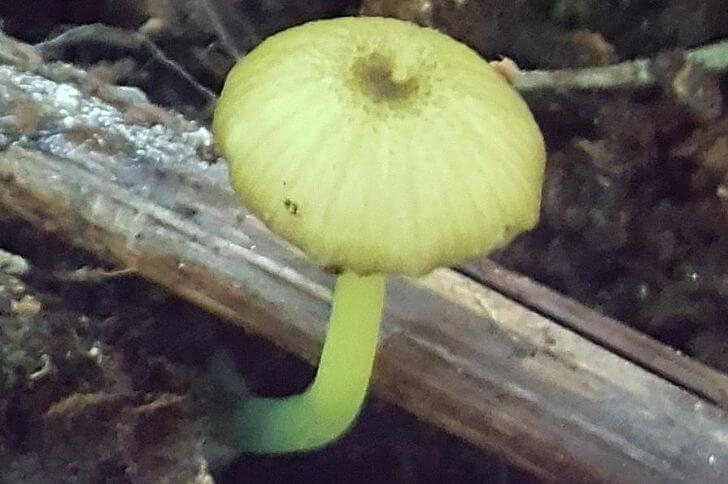
Green stem pinkgills are a species of green fungi found in some wet parts of Australia.
Identification:
It has a distinctive greenish-yellow cap that eventually turns brownish-yellow as it ages. Gills are pinkish while the ringless stipe is yellow-green in color.
Green stem pinkgills are rare green mushrooms. They favor alkaline soils and are common in summer.
9. Chicken Lips Mushrooms
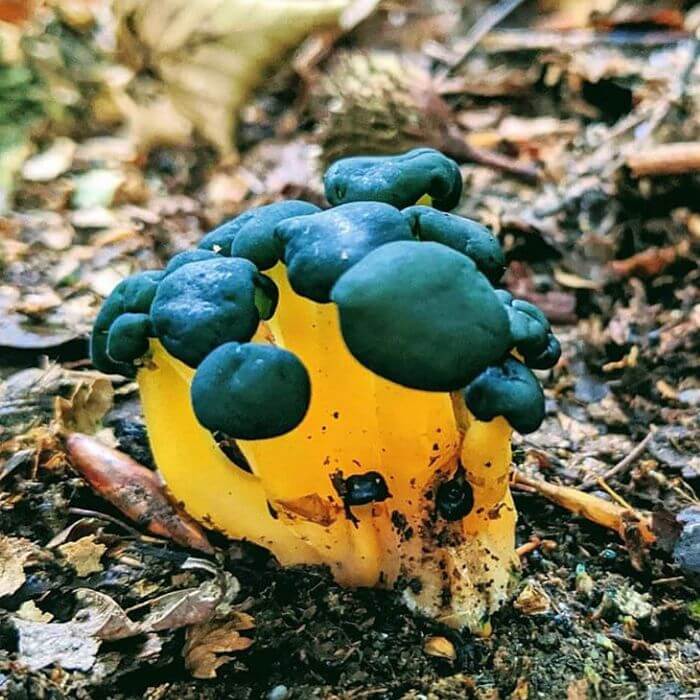
source: nature_laurentienne
Leotia viscosa, also known as chicken lips, are interesting mushrooms. They are also very rare.
Identification:
They are a member of the cup fungi family. However, unlike other cup fungi, their caps curve inwards giving the mushroom lips-like shape. Caps are a dark green while the stems are yellow. They occur in tight clusters.
The fruiting bodies of Leotia viscosa are typically found on decaying wood such as fallen logs, stumps, and dead trees in moist locations.
10. Green Skin-head
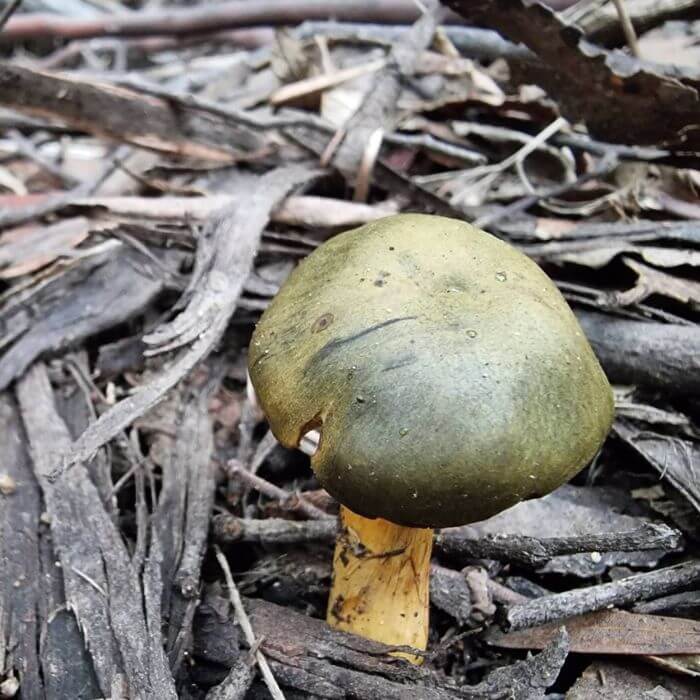
source:roryblack26
Green skin-head or dermocybe austroveneta is an easily identifiable species of mushroom found in southern Australia.
Identification:
This mushroom can be identified by its physical characteristics, such as a distinctive smooth green cap that ranges from four to six inches in diameter.
It has gills underneath the cap which are usually yellowish-brown with a cobweb-like veil. The stem is typically colored pale green.
When foraging for mushrooms, green skin-head mushrooms should always be avoided due to its similarity to other toxic species of mushrooms.
FAQs
Are green mushrooms edible?
Some green mushrooms are edible. Green-cracking russula are a delicacy in Spain. Also green brittlegills are an edible green mushroom species.
What kind of mushroom is green?
Common green mushrooms include green-cracking russula, green elf cups, green stem pinkgills, aniseed toadstool and parrot waxcap.
Is green elf cup edible?
No. Green elf cup mushrooms are inedible. And the small size makes it hard to harvest this green fungus.
Sources:
Hi There,
My name is Jenny. I’m the Chief Editor at Try Green Recipes and besides making yummy and healthy foods for my kids, grandkids, and friends. I’m new to the blogging world but I believe what I have to share is unique and will bring joy to your home. If you are adventurous and want try something tasty, let’s get started.

